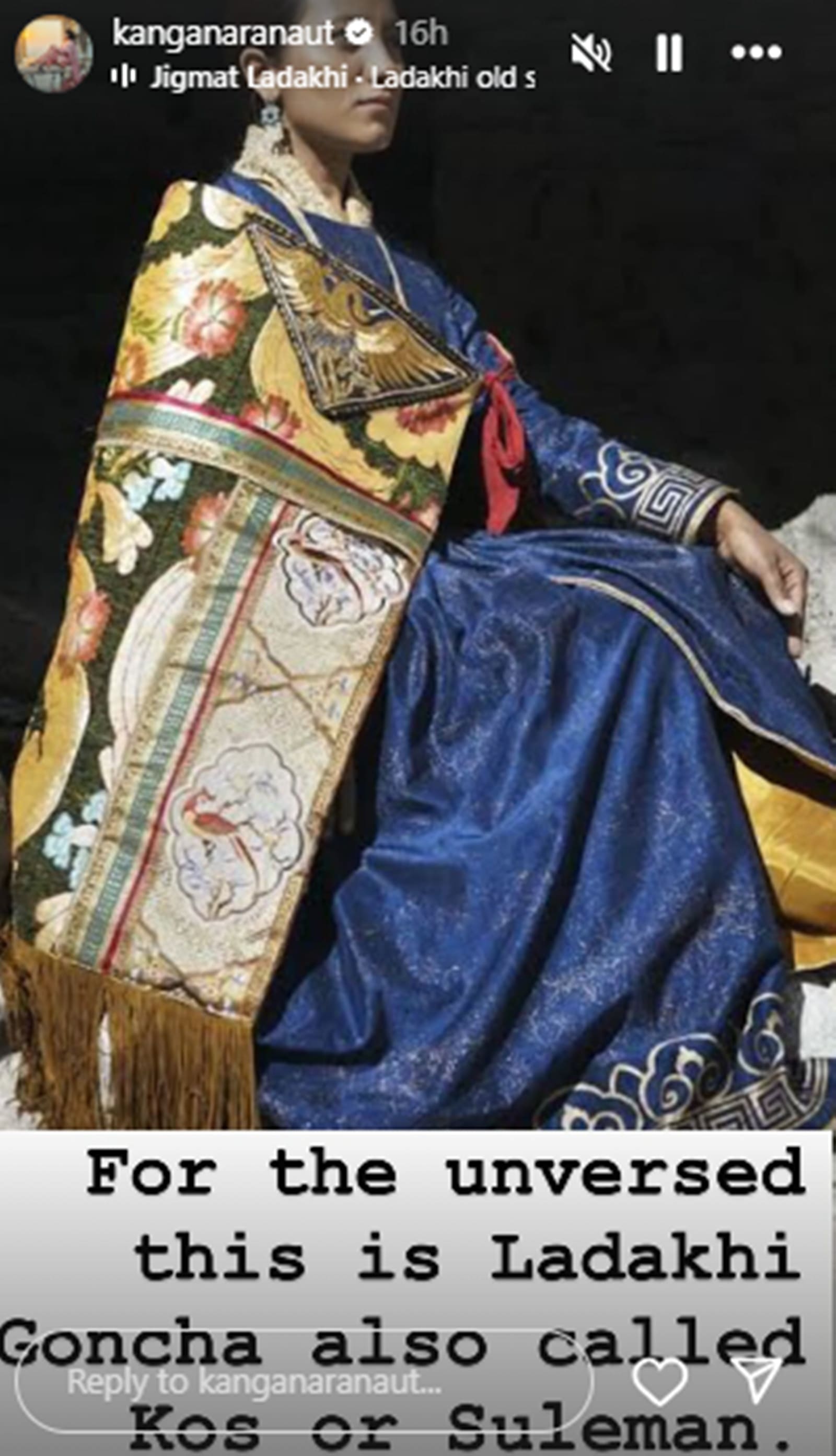Kangana Ranaut took to her social media Tuesday to slam fashion bloggers for misnaming her latest outfit — a Ladakhi Goncha. Taking to her Instagram Stories, the Emergency actor wrote: “Absolutely embarrassing that these so-called fashion bloggers have no knowledge, understanding or consideration for mountain people, their culture, or traditions. Everything is not Anarkali. Not a single article called this dress traditional Ladakhi Goncha. It is unfair and culturally inappropriate.”
Earlier, Kangana had shared pictures of herself wearing the traditional attire.
“For the unversed, this is Ladakhi Goncha, also called Kos or Suleman,” wrote Ranaut, adding that the traditional attire can “look more beautiful than international gowns or branded dresses”. “We must promote our local traditional attire. India has so much to offer. We must recognise that. #Vocalforlocal.”
 Know more about Gotcha or Kos (Photo: Kangana Ranaut/Instagram Stories)
Know more about Gotcha or Kos (Photo: Kangana Ranaut/Instagram Stories)
Let’s learn more about the Ladakhi Goncha.
Resembling a coat made of wool, velvet, or cotton, goncha is usually brightly coloured and uses a belt made of thick fabric or skeyraks for it to be tied around the waist.
Gonchas are traditionally worn by men in Tibetan culture, said costume designer Nidhi Yasha, a NIFT, New Delhi, and IIM Ahmedabad alumna. “Women typically wear a different style of robe called a ‘chuba,’ which is similar in length but has a different cut and style. Chubas are often narrower and more form-fitting than gonchas, and may feature different colours and patterns,” Nidhi told indianexpress.com.
However, both are important pieces of traditional Tibetan attire and are worn for special occasions, ceremonies, and festivals and hold significant cultural and symbolic value, according to Nidhi.
Cultural identity: Wearing gonchas is a way for Tibetans to connect with and express their cultural heritage. The designs are intricate, and the patterns, and colours reflect their traditions and unique aesthetics.
Story continues below this ad
 Here’s what to know about Gotcha or Kos Photo: Kangana Ranaut/Instagram Stories)
Here’s what to know about Gotcha or Kos Photo: Kangana Ranaut/Instagram Stories)
Status and tradition: Gonchas are often passed down through generations and can represent familial heritage and status. “They are worn on important occasions such as weddings, festivals, and religious ceremonies to honor tradition and show respect,” said Nidhi.
Climatic conditions: Tibetan regions can experience harsh weather conditions, especially in the high-altitude areas. “The fabrics are thick and warm and they provide protection from the cold and help to keep the wearer comfortable in challenging environments,” shared Nidhi.
Religious and spiritual significance: In Tibetan Buddhism, clothing is often seen as a reflection of one’s spiritual practice. “The act of wearing a traditional Goncha can be a way to show reverence for Buddhist teachings and embody spiritual principles,” said Nidhi.
Overall, goncha serves as a symbol of identity, tradition, protection, and spirituality. “Its significance goes beyond mere clothing and reflects the rich history



